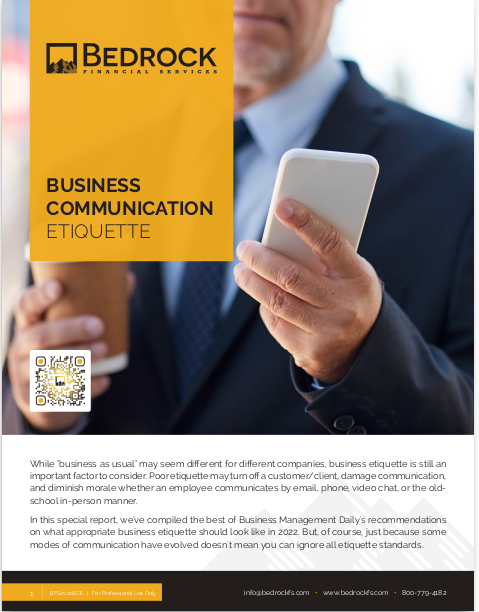Key Takeaways
-
Lead lists often go cold not because the leads were low quality, but because your outreach didn’t align with their expectations, timing, or level of trust.
-
Fixing this now means shifting from transaction-focused touchpoints to relationship-building sequences designed to rewarm interest and reestablish credibility.
The Reality Behind a Quiet Inbox
You bought a lead list. Or maybe you earned it through a referral funnel or inbound signups. Either way, you’ve sent emails, left voicemails, maybe even texted—and heard nothing back.
In 2025, lead silence isn’t just about people ignoring you. It’s often a sign that your timing, messaging, or delivery is out of sync with their current mindset.
You’re not alone. Financial professionals across the board are seeing a drop in lead responsiveness. But the good news is this: the silence doesn’t mean they’re lost forever. It just means your approach needs a reset.
Why They Stopped Responding
1. You Made It About You, Not Them
Most first messages in financial outreach still sound like this:
-
“I’d love to schedule a time to talk.”
-
“I’m a licensed agent who helps people with Medicare.”
-
“Let’s connect about your retirement options.”
Even if these are true, they fail to answer one thing: why should the lead care right now?
Today’s leads need relevance in the first 5 seconds. If your outreach doesn’t immediately connect to their situation, pain, or decision point, it will be ignored.
2. You Sent Too Many Messages—Too Fast
Sending 3 emails in 48 hours used to be standard. In 2025, it’s a red flag.
Consumers have grown increasingly resistant to pressure tactics. What they respond to now is cadence: a slow, value-rich approach that meets them where they are instead of rushing them to where you want them to be.
3. You Asked for Too Much, Too Soon
A common mistake is asking a cold lead to book a call, give personal info, or make a financial decision in the very first touchpoint. That’s too big a leap.
Instead, start by offering a small, low-commitment action:
-
A quick 3-question checklist
-
A single-page retirement fact sheet
-
A one-minute explainer video
These ease the lead into engagement without requiring a big trust jump.
4. You Didn’t Adapt to the Time of Year
Your lead list isn’t operating in a vacuum. Timing matters.
-
January through March: High interest in taxes, retirement rollover, health expenses.
-
April through June: Open to financial cleanups, especially before vacations.
-
July through September: Often quieter—vacations, kids off school.
-
October through December: Re-engagement rises as end-of-year decisions become urgent.
If your message doesn’t reflect where the client actually is in the year, it can fall flat.
How to Warm Up a Cold Lead List
Segment Your List by Timing and Source
Not every lead should get the same message.
Start by separating them into meaningful buckets:
-
Fresh leads (past 30 days)
-
Stale leads (30–90 days)
-
Old leads (90+ days)
Then go further:
-
Opt-ins vs. purchased data
-
Medicare-focused vs. retirement-focused
-
High-income zip codes vs. budget-conscious regions
This lets you build specific re-engagement campaigns that match their original context.
Rebuild Trust with Low-Ask Campaigns
Don’t restart with a call request. Start with help.
Your goal is to become a helpful presence before you ever ask them to speak with you.
Example of a trust-building sequence:
-
Email 1: “Is your retirement plan 2025-ready? Here’s a 2-minute checklist.”
-
Email 2: “Common questions people ask us after age 60.”
-
Email 3: “One-minute video: What most people forget about Social Security timing.”
-
Email 4: “Would it help if we looked at your numbers together? I’ll send over a few options.”
The idea is to walk them to the conversation, not drag them into it.
Spread Out Your Touchpoints Over Time
A re-engagement campaign should last 3–4 weeks minimum.
Try a 5-touch sequence:
-
Week 1: Helpful checklist (email)
-
Week 2: Personal message (text or voicemail)
-
Week 3: Education or myth-busting content
-
Week 4: Light CTA (call invite, form, or consult option)
This method earns attention over time without overwhelming the recipient.
Use SMS and Voicemail Wisely
In 2025, SMS open rates are still strong, but response rates have dropped if they feel automated or intrusive.
Tips:
-
Keep texts under 160 characters.
-
Make the message about them, not your availability.
-
Use voicemail drops only if you’ve already emailed them at least once.
Example: “Hi, this is Jordan. You might’ve downloaded our retirement sheet last month. Just wanted to check—was it helpful, or did you still have questions on it?”
What to Change About Your Messaging
Drop the Industry Jargon
Phrases like “portfolio diversification” or “Medigap strategy” might sound clear to you—but they usually make leads tune out.
Replace with everyday language:
-
“Make sure your money lasts.”
-
“Avoid surprise healthcare bills.”
-
“Keep more of your retirement income.”
Talk About the Problem Before You Offer the Solution
Instead of opening with what you offer, start with what they might be worried about:
-
“Not sure if you’ll outlive your savings?”
-
“Confused about what Medicare doesn’t cover?”
This positions your message as help, not a pitch.
Make the Next Step Feel Effortless
Your CTA shouldn’t ask for a 30-minute call. Instead:
-
Offer a yes/no quiz
-
Give a calendar with pre-filled 10-minute slots
-
Send a PDF that’s useful even if they never reply
You’re showing value before you extract any.
How Long to Keep Trying
Every lead has a shelf life—but it’s longer than you think if you handle them right.
Here’s a timeline worth testing:
-
Day 0: Original outreach
-
Day 3: Light reminder (different format)
-
Day 7: Useful resource (no ask)
-
Day 14: Light CTA (reply or book call)
-
Day 21: Silent gap
-
Day 28: One last touch with personal language: “If now’s not the right time, totally understood. If it is—just hit reply.”
If no response after 30 days and 4–5 multi-channel touches, move them to a nurture track. But don’t delete them. You’ve already invested effort.
The Role of Automation in 2025
Automation should feel manual.
The best CRMs in 2025 let you:
-
Stagger touchpoints based on behavior (not just days)
-
A/B test subject lines for open rates
-
Personalize without sounding robotic
But no matter how good your automation is, the message still has to earn attention. Set it up like a human would write it—short sentences, real tone, and a single point per message.
When Silence Is a Sign to Stop
Some leads aren’t ready. Others never were.
That’s okay—but silence over months without a single interaction is often a sign to switch gears.
Move them to a quarterly newsletter, occasional re-check campaign, or ask them directly: “Would you like to stay on our list, or prefer we check back another time?”
Respect builds reputation.
Rebuilding Engagement Starts with Relevance
You don’t need louder emails or more texts—you need better reasons for your leads to care.
Shift from outreach that pressures to messaging that aligns. You’ll earn trust, attention, and action more reliably.
And if you’re tired of struggling to build, track, and automate this on your own—we can help.
At Bedrock Financial Services, we help financial professionals like you rebuild pipeline strategies that actually convert. Our platform gives you the automation, content, and CRM tools to turn silence into interest again. Sign up today, and we’ll help you do more than just send emails—we’ll help you spark real conversations.







